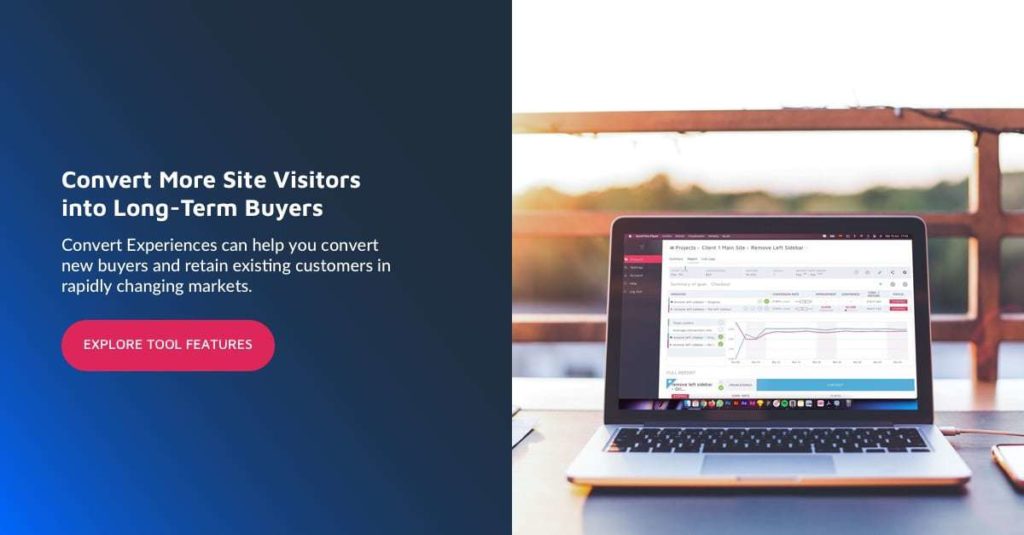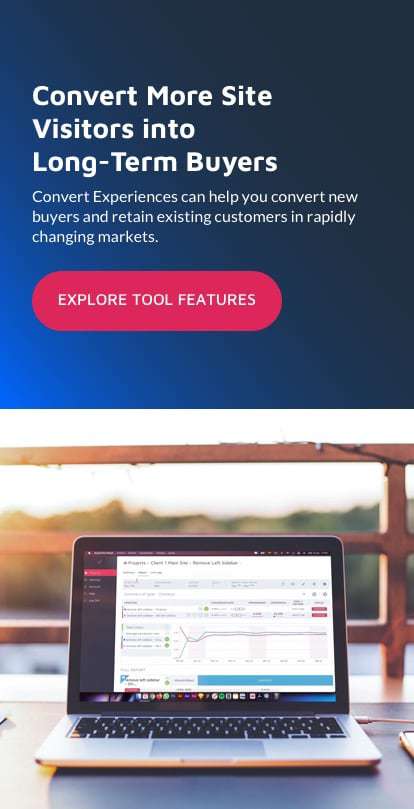How to Optimize Your Website for the Holiday Season (for More Conversions and More $$$)
The holidays pose some interesting challenges for optimizers including:
- Juggling your testing roadmap with an increase in demand from marketing,
- Working with small windows of time to validate products (before the influx in web traffic), and
- Battling direction changes from senior management.
The added pressure and sudden lack of time can bring disruption to your day-to-day. But being prepared for the holidays can be the difference between delivering value to prospects eager to make a purchase and falling flat, missing the potential influx of sales and exposure.
This article will give you a few tips and tactics on how to optimize your website so you can leverage the increased traffic and sales that happen during the holidays. We’ll also show you how to test during the holidays for more conversions.
Let’s begin with our first tip…
Define Your Holiday Period
Every industry defines the holidays differently. Holidays are defined differently between industries. But a common trend for all is the increase in web traffic compared to other periods in the year. Depending on your vertical, you might see a large spike right before the end-of-year holidays, or a decline throughout December.
For example, for online gambling, a ‘holiday period’ could be Royal Ascot or the Superbowl. These are two periods where they’re likely to see an increase in website visitors.
For Amazon, it could be Amazon Prime Day. For Mr Bunny’s Easter Supplies, it is probably going to be around Easter time.
So how do you prepare for this?
Seasonal Optimization Tip 1: Anticipate, Reverse Engineer, and Plan
Anticipating and planning for these seasonal changes will define if your optimization programs give you results or useless data. It’s worth mapping out all the important events that happen every year. Then you can plan backward.
You don’t have to pause or discard your yearly testing plans if you incorporate them into your roadmap in advance. It can be intelligently built into and prepared for and treated as Business As Usual, prioritizing holiday-specific campaigns when the time comes.
Senior UX & CRO Consultant Elise Maile says
Peak trading periods don’t simply cover Black Friday and Cyber Monday; for many businesses, they’re dealing with mini-peaks all year round, from gambling on whether a royal will birth a boy or girl, to managing increased traffic when a celeb wears a high street dress, it’s important that the tests you’re running are always prioritized for a peak period because they happen all year round
Acing optimization means creating your own definition of holidays based on historical traffic data and seasonal insights. They may coincide with traditional holidays, or you may find they are specific to your industry.
Let’s jump into tip 2…
Seasonal Optimization Tip 2: Know What Will Be Different
Begin by asking the question: is customer behavior different during the holidays?
There is a perception that customer behavior is different around the holidays, and specific research shows this to be largely true.
A study by Performics found that consumer attitudes changed around Black Friday. Need-driven buyers found they were more likely to purchase something they wanted around Black Friday. The allure of the event was enough for users to give in to their temptations and make a purchase they wouldn’t normally do.
Knowing this should help you adapt the A/B test you run during this period. For example, you may want to experiment with desire’ based copy versus practical need-based messaging.
An analysis of over 8.5 million users by Monetate showed returning customers are more than twice as likely to convert around holiday periods than compared to any other time throughout the year (4.2% conversion rate, compared to 2% prior).
Not only that, buyers in the previous holiday period spent “significantly more” during the next holiday period, showing that good customer experience can have positive repercussions during the following holiday cycle.
Seasonal Optimization Tip 3: Know Your Baseline
What is normal anyway?
The traditional ebb and flow cycle of ecommerce is evolving, thanks to the influence of social media and digital marketing on our shopping habits.
Consumers are besieged with direct and retargeted marketing daily. The ease of getting digital ads in front of millions of potential customers makes your web analytics data look more like a mountain range than a sound wave.
If you have your advertising dialed in, this may be one reason why your numbers mirror traditional holidays. Other times may include:
- A celebrity releases a new line of clothing in collaboration with your company. The content team puts together a particularly good piece of research, or
- The marketing team creates a video that goes viral.
In each of these examples, you will see a spike in web traffic akin to what you might see around holiday periods.
Should You Run Tests During Holiday Periods?
The fundamental premise of optimization testing is comparing user behavior within two representative samples. The data collected is only as accurate as the sample you test and mixing customer cohorts (holiday visitors vs normal time) will give you misleading results i.e if you run a test in December and it increases conversion rates, don’t assume it’s going to be the same during summer.
Sample pollution is a concern when running tests through holiday periods. Making sure your control group contains the same buyer type as the treatment group is the only way to be sure you’re gathering accurate data and having an idea of how different customer segments behave will help your analysis. If your test straddles ‘normal’ periods and holiday periods, your test data is going to be invalid.
Seasonal Optimization Tip 4: Remember Optimization Fundamentals
The fundamentals of optimizing become more important when you have increased website activity.
Poor user experience can damage your brand.
A lethargic page load speed will frustrate your users and cause them to run to your competitors.
What is the state of your mobile experience?
With the sudden rush of activity, having a pipeline of tests is crucial to understand your testing prioritization.
Businesses approach prioritization in different ways. But the most logical method of prioritizing is focusing on the tests which you believe will bring the greatest return.
Every website is unique in terms of where they can be optimized, which is why it’s critical your prioritization roadmap is made up of conversion research-backed hypotheses, which you can create with Convert’s free hypothesis Generation tool.
Wrapping It Up
There’s a lot more to think about regarding your experimentation project around the holidays. Without question, it is still a good idea to continue testing. With careful planning, and following these four tips, there is no reason your optimization program should come to a halt.
Work in expected peaks into your roadmap. Carry out conversion research, and pay special attention to the differences in customer segments who use your site. Be aware of sample pollution. And most importantly, trust the data, even if it tells you something you don’t want to hear. This is the power of experimentation.
References
- Monetate research
- Representative samples
- Performics
- Poor UX will damage the brand
- Humanizing web speed
Written By
Edd Saunders

Edited By
Carmen Apostu



